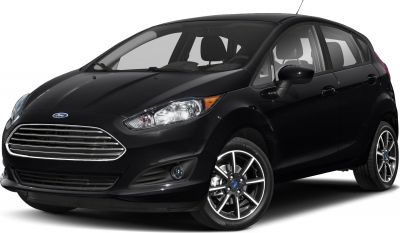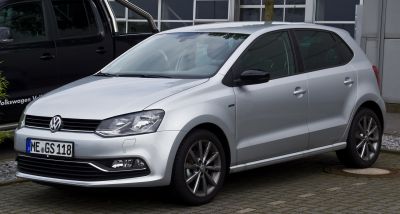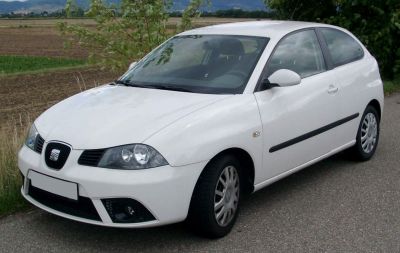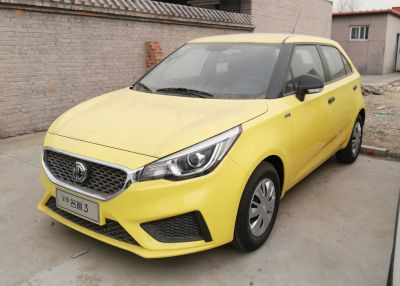 1982 Rover Maestro Dimensions, Size & Specs
1982 Rover Maestro Dimensions, Size & SpecsMeasurements of the 1982 Rover Maestro, engineered for optimal performance and comfort
| Dimensions | |
|---|---|
| Length: | 4000 mm157.5 in13.1 ft |
| Width: | 1695 mm66.7 in5.6 ft |
| Height: | 1430 mm56.3 in4.7 ft |
| Trunk Capacity: | 300-1090 liter10.6-38.5 cu ft |
| Trunk Capacity (Max): | 1090 liter38.5 cu ft |
| Weight Specifications | |
| Curb Weight: | 925-1095 kg2039-2414 lbs |
| Maximal permitted Weight: | 1370-1560 kg3020-3439 lbs |
| Tire Specifications | |
| Tire Sizes: |
|
The Rover Maestro, produced from 1983 to 1997, is a distinctive hatchback that reflects the design trends and automotive engineering of the 1980s and 1990s. With an overall length of 4000 mm (157.5 inches), a width ranging between 1690 mm to 1695 mm (66.5 to 66.7 inches), and a height of 1430 mm (56.3 inches), the Maestro offers a compact yet roomy profile ideal for urban and suburban driving. Depending on the variant and year, the curb weight varies from 925 kg to 1095 kg (2040 to 2413 lbs), balancing manageable mass for performance while maintaining efficiency. The vehicle supports a maximum weight capacity between 1370 kg and 1560 kg (3020 to 3440 lbs), accommodating passengers and cargo comfortably. Luggage capacity is notably versatile, ranging from 300 liters (10.6 cubic feet) with rear seats upright up to 1090 liters (38.5 cubic feet) with the seats folded, making the Maestro practical for daily errands and longer journeys alike. Tire options for the Rover Maestro include sizes such as 155/80 R13 79 T, 185/55 R15 86 H, and 175/70 SR14, catering to varying performance and handling preferences. Overall, the Rover Maestro stands out as a compact hatchback blending practicality with distinctive British automotive styling, suitable for those seeking a classic yet functional vehicle.
Discover the standout features that make the 1982 Rover Maestro a leader in its class
Have a question? Please check our knowledgebase first.
The Rover Maestro measures 4000 mm (157.5 inches) in length, making it a compact hatchback suitable for city driving and moderate parking spaces. Its width ranges between 1690 mm to 1695 mm (66.5 to 66.7 inches), contributing to a stable road presence without being overly wide. The height of the car is 1430 mm (56.3 inches), giving it a balanced profile that supports both aerodynamics and interior headroom. These dimensions position the Maestro comfortably in the compact hatchback segment, providing a good balance between interior space and maneuverability.
The curb weight of the Rover Maestro ranges from 925 kg to 1095 kg (2040 to 2413 pounds), depending on the specific model and configuration. The curb weight includes the vehicle with all standard equipment, oil, coolant, and a full tank of fuel but without passengers or cargo. The maximum weight, or gross vehicle weight rating (GVWR), varies between 1370 kg and 1560 kg (3020 to 3440 pounds), which is the upper limit of the vehicle's weight when fully loaded with passengers and cargo. These weight specifications indicate the Maestro's relatively lightweight construction, which helps in improving fuel economy and handling.
The Rover Maestro offers a versatile luggage capacity that ranges from 300 liters (10.6 cubic feet) with rear seats upright to a substantial 1090 liters (38.5 cubic feet) when the rear seats are folded down. This flexible cargo space allows the car to handle everyday grocery runs and moderate cargo needs with ease, while the expanded capacity with folded seats caters to larger loads or occasional transport of bulky items, adding to the practical appeal of the hatchback design.
With a length of 4000 mm (157.5 inches), width of up to 1695 mm (66.7 inches), and height of 1430 mm (56.3 inches), the Rover Maestro comfortably fits within the dimensions of a standard residential garage. Most domestic garages are designed to accommodate vehicles up to approximately 5 meters (196.9 inches) in length and 2.5 meters (98.4 inches) in width, meaning the Maestro should fit easily with room to spare for opening doors and maneuvering around the vehicle. This makes it a convenient choice for homeowners looking for a compact but practical vehicle.
The Rover Maestro, introduced in 1983, succeeded earlier smaller and less modern Rover models. Compared to its predecessor, the Maestro featured a slightly increased length of 4000 mm (157.5 inches) and a more substantial width close to 1695 mm (66.7 inches), offering improved interior space and road presence. The height remained fairly consistent at around 1430 mm (56.3 inches), helping maintain a balanced stance. Overall, the Maestro provided a more spacious and modern package with improved dimensions that better suited the needs of family car buyers in the 1980s and 1990s.
The Rover Maestro competes well against other compact hatchbacks of its time, such as the Ford Escort and Volkswagen Golf Mk2. With a length of 4000 mm (157.5 inches), it is slightly longer than some contemporaries like the Golf Mk2 which measured around 3970 mm (156.3 inches). The width of approximately 1690-1695 mm (66.5-66.7 inches) is also competitive, offering good interior room and stability. Its flexible luggage space of up to 1090 liters (38.5 cubic feet) is quite practical, often exceeding that of similarly sized rivals. This balance of size and storage capability made the Maestro a strong contender in its class.
The Rover Maestro came equipped with a range of tire sizes including 155/80 R13 79 T, 185/55 R15 86 H, and 175/70 SR14. The smaller 13-inch tires (155/80 R13) were common on basic models and offered a softer ride ideal for comfort. Larger tires like the 15-inch (185/55 R15) and 14-inch (175/70 SR14) options provided enhanced road grip, handling, and a sportier feel, often found on performance or higher-spec versions. Tire size selection influences both the ride quality and the vehicle’s responsiveness, allowing owners to prioritize comfort or driving dynamics.
The curb weight of the Rover Maestro ranges from 925 kg (2040 lbs) in lighter, more stripped-down models to around 1095 kg (2413 lbs) in better-equipped versions or those with larger engines. Variations in weight can result from differences in engine size, trim levels, optional equipment, and body reinforcements. For instance, models with upgraded interior features, air conditioning, or sportier suspension setups tend to weigh more. This weight spread reflects the flexibility of the Maestro lineup, catering to both economy-focused buyers and those seeking enhanced performance or luxury.
The Rover Maestro’s width of approximately 1690 mm to 1695 mm (66.5 to 66.7 inches) strikes a balance between interior space and urban practicality. This moderate width allows the vehicle to provide reasonable shoulder room and comfort for four passengers without becoming cumbersome to maneuver in city traffic or tight parking spots. While wider cars often feel more stable at speed, the Maestro’s dimensions make it agile enough for narrow roads and parking garages while still giving occupants a comfortable cabin width.
The Rover Maestro stands 1430 mm (56.3 inches) tall, a dimension that balances interior headroom and external styling. This height provides ample headspace for most passengers, contributing significantly to cabin comfort, especially for taller occupants. From an exterior perspective, the car’s relatively low profile improves aerodynamics, which can positively influence fuel efficiency and reduce wind noise during highway driving. This height also helps keep the center of gravity low, aiding in vehicle stability and handling.
Discover similar sized cars.

| Production: | 2021-present |
|---|---|
| Model Year: | 2021 |
| Length: | 4045-4125 mm159.3-162.4 in |
| Width: | 1735 mm68.3 in |
| Height: | 1505-1525 mm59.3-60.0 in |

| Production: | 2005-2009 |
|---|---|
| Model Year: | 2005 |
| Length: | 3990 mm157.1 in |
| Width: | 1695 mm66.7 in |
| Height: | 1470 mm57.9 in |

| Production: | 2021-2023 |
|---|---|
| Model Year: | 2022 |
| Length: | 4048-4091 mm159.4-161.1 in |
| Width: | 1941 mm76.4 in |
| Height: | 1484-1490 mm58.4-58.7 in |

| Production: | 2021-2023 |
|---|---|
| Model Year: | 2022 |
| Length: | 4048-4091 mm159.4-161.1 in |
| Width: | 1941 mm76.4 in |
| Height: | 1484-1490 mm58.4-58.7 in |

| Production: | 2018-2021 |
|---|---|
| Model Year: | 2018 |
| Length: | 4068 mm160.2 in |
| Width: | 1941 mm76.4 in |
| Height: | 1498 mm59.0 in |

| Production: | 2014-2017 |
|---|---|
| Model Year: | 2015 |
| Length: | 3970-3983 mm156.3-156.8 in |
| Width: | 1901 mm74.8 in |
| Height: | 1450-1456 mm57.1-57.3 in |

| Production: | 2006-2008 |
|---|---|
| Model Year: | 2006 |
| Length: | 3977-3992 mm156.6-157.2 in |
| Width: | 1698 mm66.9 in |
| Height: | 1441 mm56.7 in |

| Production: | 2018-2024 |
|---|---|
| Model Year: | 2018 |
| Length: | 4055 mm159.6 in |
| Width: | 1912 mm75.3 in |
| Height: | 1509 mm59.4 in |
